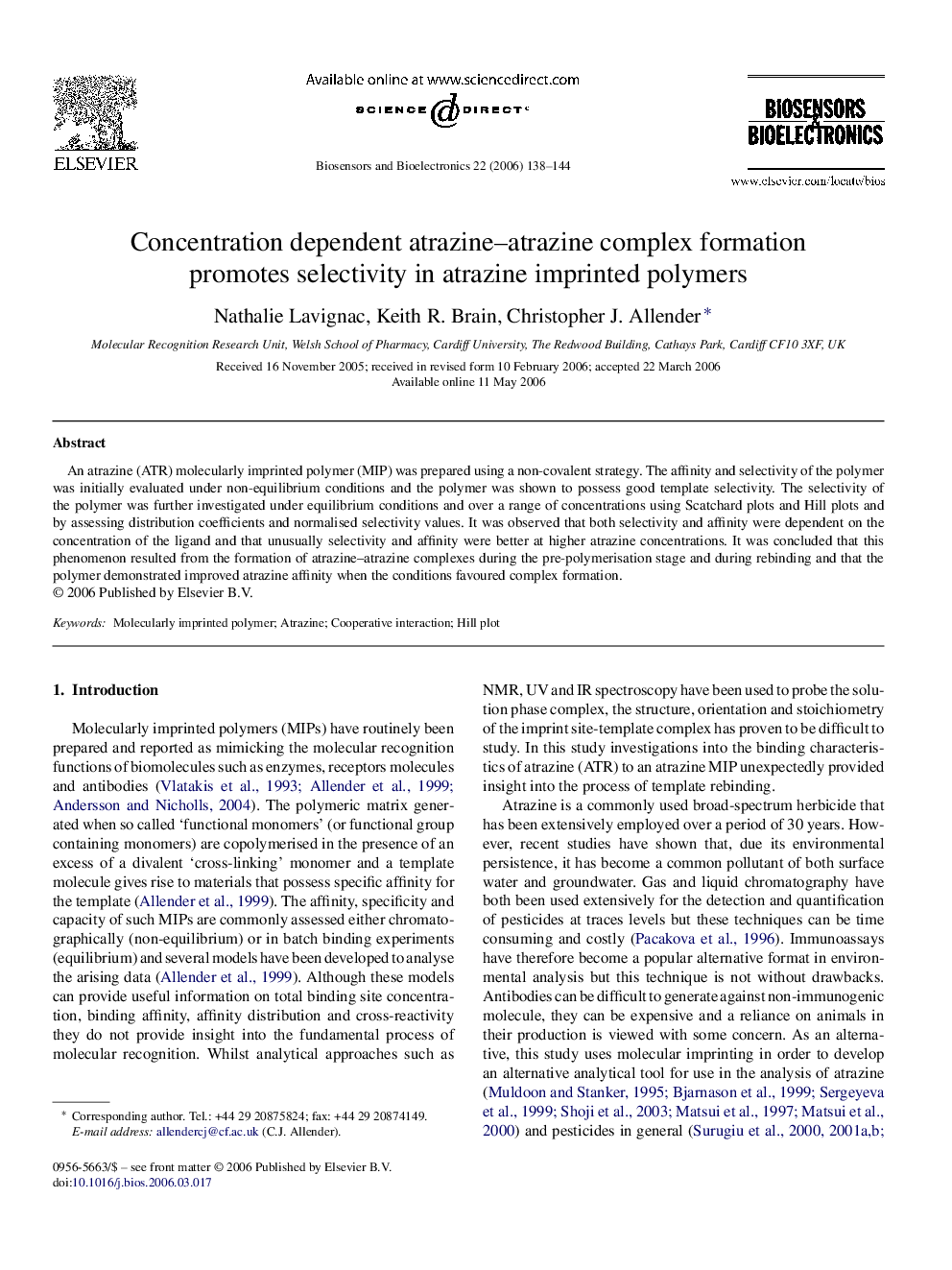| Article ID | Journal | Published Year | Pages | File Type |
|---|---|---|---|---|
| 870011 | Biosensors and Bioelectronics | 2006 | 7 Pages |
An atrazine (ATR) molecularly imprinted polymer (MIP) was prepared using a non-covalent strategy. The affinity and selectivity of the polymer was initially evaluated under non-equilibrium conditions and the polymer was shown to possess good template selectivity. The selectivity of the polymer was further investigated under equilibrium conditions and over a range of concentrations using Scatchard plots and Hill plots and by assessing distribution coefficients and normalised selectivity values. It was observed that both selectivity and affinity were dependent on the concentration of the ligand and that unusually selectivity and affinity were better at higher atrazine concentrations. It was concluded that this phenomenon resulted from the formation of atrazine–atrazine complexes during the pre-polymerisation stage and during rebinding and that the polymer demonstrated improved atrazine affinity when the conditions favoured complex formation.
